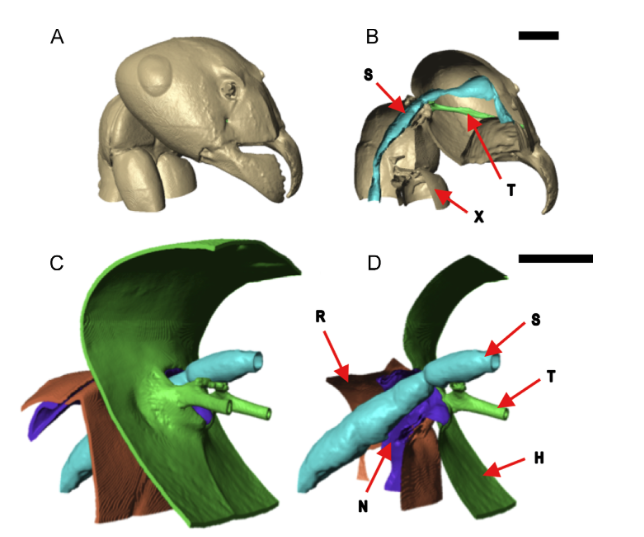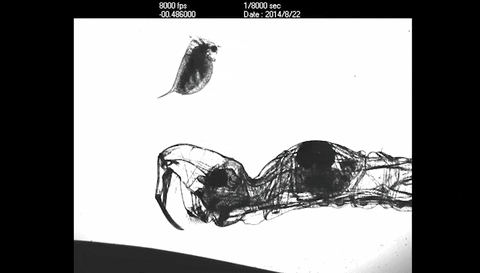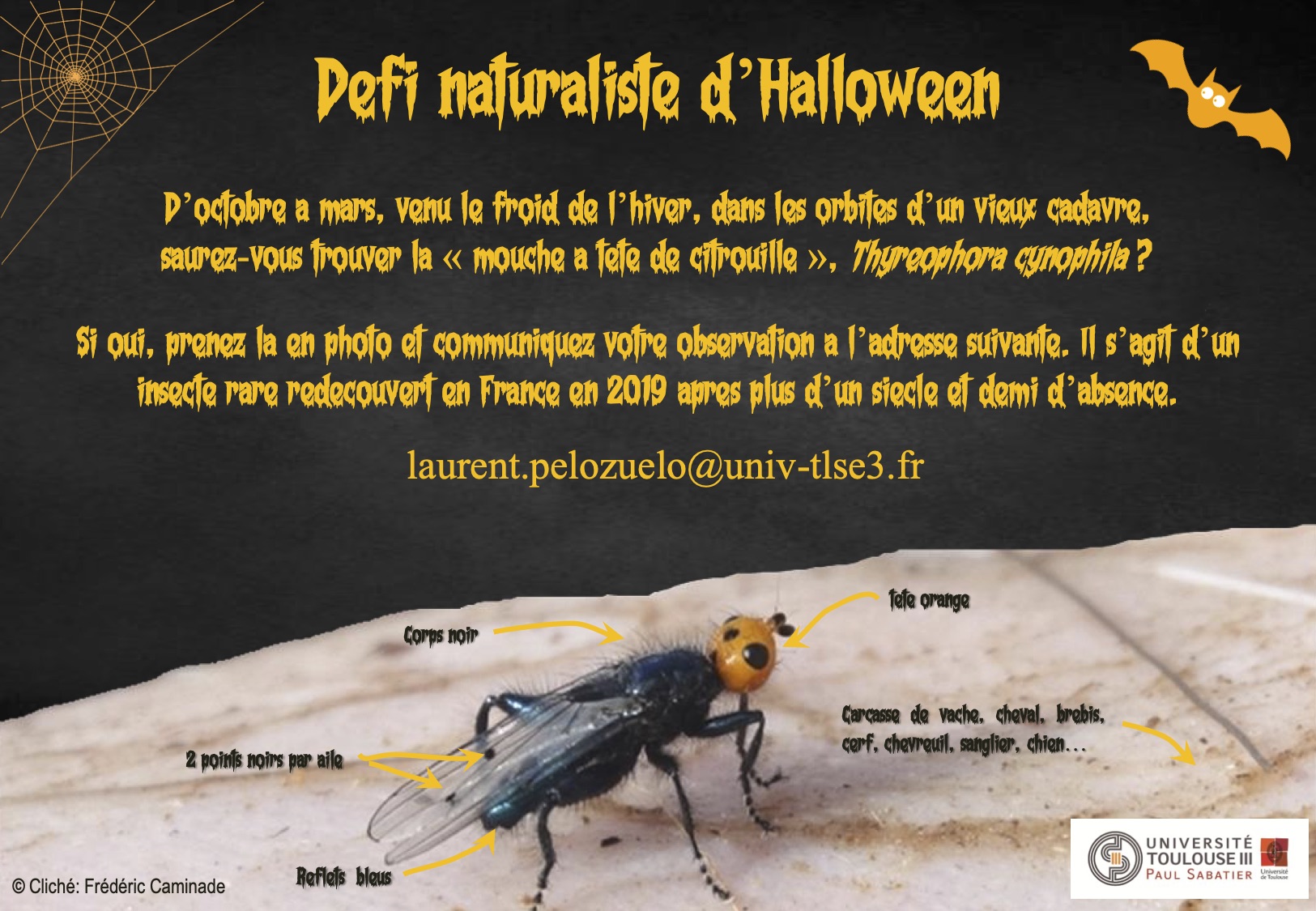We have all seen ants at work: they have the ability to lift and carry mass loads several times their own.
The two questions that come to mind
- How many times can their own mass move?
- How do they do?
For millions of years, ants have led a social life that involved transporting and supplying food to the colony. Natural selection and evolution processes have therefore favoured the development of morphological adaptations that respond to these constraints.
Video of mushroom ants (genus Atta) carrying pieces of leaves – Source Benoît GILLES (for more information, read these articles : Atta and Mutualism)
When an ant grabs a prey or object, forces are transmitted from the mandibles (head) to the thorax, from the thorax to the legs and then to the ground via the tarsus. Although studies were interested in the system of fixation to the ground (the tarses), few were directed towards the articulation of the neck. This joint is subjected to the forces generated by the displacement of a load.
A team from the University of Columbus (Ohio), led by Vienny Nguyen, therefore focused on describing the physical and structural properties of this articulation.
To unlock this secret, scientists have combined various analytical tools such as mechanical experiments (see illustration 1), tomodensitometry (X-ray imaging for a reconstruction of an organ in 2D or 3D), scanning electron microscopy and computer modeling at Formica exsectoides (Family of Formicidae).
caption id=”attachment_2022″ align=”aligncenter” width=”578″] Illustration 1 : A) centrifuge (C : camera – SO : LCD for speed measurement – D&SS : speed sensor – CM : centrifuge motor); B) Image showing the instantaneous speed and deformation of the ant ; C) Ant installed with markers on the body (Source : V. Nguyen et al. 2014)[/caption]
Illustration 1 : A) centrifuge (C : camera – SO : LCD for speed measurement – D&SS : speed sensor – CM : centrifuge motor); B) Image showing the instantaneous speed and deformation of the ant ; C) Ant installed with markers on the body (Source : V. Nguyen et al. 2014)[/caption]
Their results show first of all that the resistance is maximum when the insect’s body is aligned with the load to be moved. The connecting tissues between the head and the thorax have a elasticity power close to 230MPa (megapascal : N/M2), which is equivalent to supporting a mass of approximately 1000 times that of the ant’s body (6-7mg) : that is to say close to 7g!
Scientists have also discovered that the force suffered by the neck during a load transport generates irreversible connections and damage from a load equivalent to 300 to 900 times the mass of the ant and that the joint gives way, the head separates from the rest of the body, around 5000 times.
In addition, the soft neck tissues of this species are not stronger than those of the legs (72MPa) or wing membrane (52MPa) of the locust genus Locusta. However, these fabrics are much less elastic than those of the cricket: 3.3GPa and 1.9GPa respectively.
caption id=”attachment_2023″ align=”alignright” width=”362″] Illustration 2 : A) 3D view of the ant head ; B) Cross section of the head (X : exoskeleton – S : esophagus – T : tentorium) ; C) 3D reconstruction of the neck joint ; D) Cross section of the neck joint (H : head – N : neck membrane – R : thorax) – scale : 250µm (Source : V. Nguyen et al. 2014)[/caption]
Illustration 2 : A) 3D view of the ant head ; B) Cross section of the head (X : exoskeleton – S : esophagus – T : tentorium) ; C) 3D reconstruction of the neck joint ; D) Cross section of the neck joint (H : head – N : neck membrane – R : thorax) – scale : 250µm (Source : V. Nguyen et al. 2014)[/caption]
The ability to carry heavy loads in these ants comes from the design of the soft tissue assembly and the internal structure of the head cuticle such as the tentorium : internal support cuticular structure ( see figure 2). Other organs such as the esophagus, the trunk of the cerebellum or the neck membrane play a small role in the resistance and elasticity of the joint. These organs, occupying a large part of the neck volume, the muscles of the insect’s joint are in fact located outside the joint, mainly in the thorax.
Source :
– Nguyen V. ; Lilly B. & Castro C. (2014) : The exoskeletal structure and tensile loading behavior of an ant neck joint. Journal of Biomechanics, 47:497-504 (lien)





